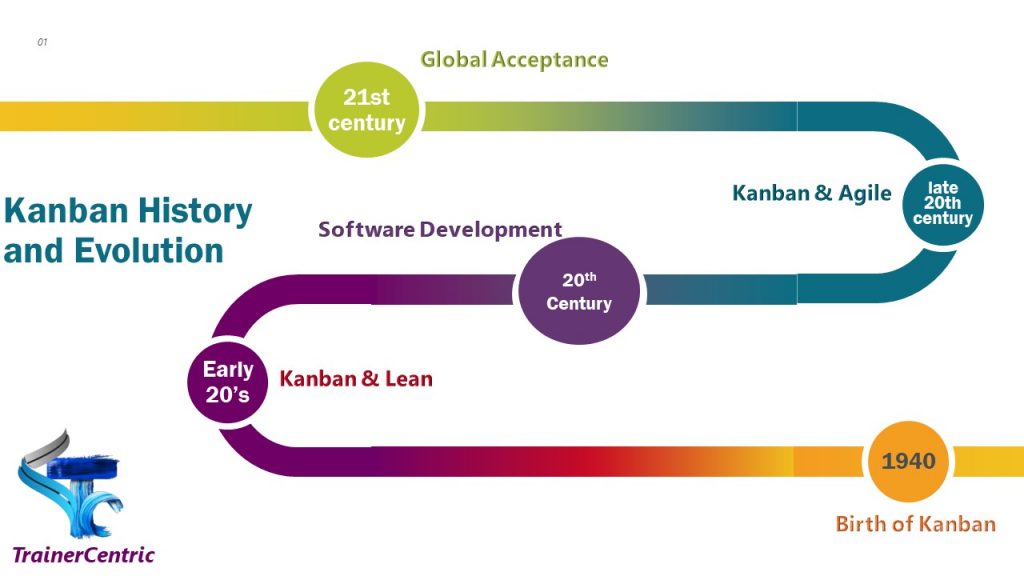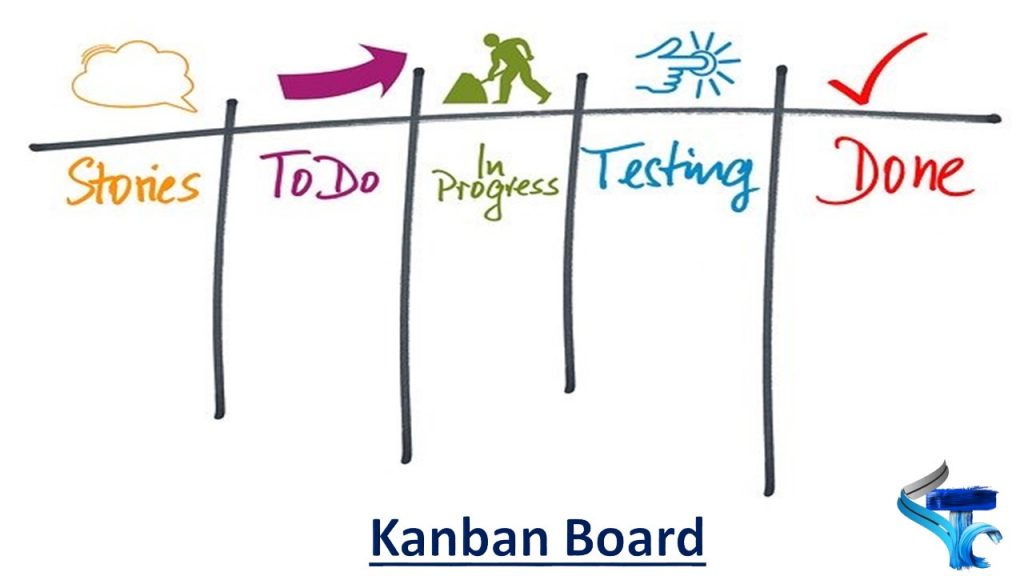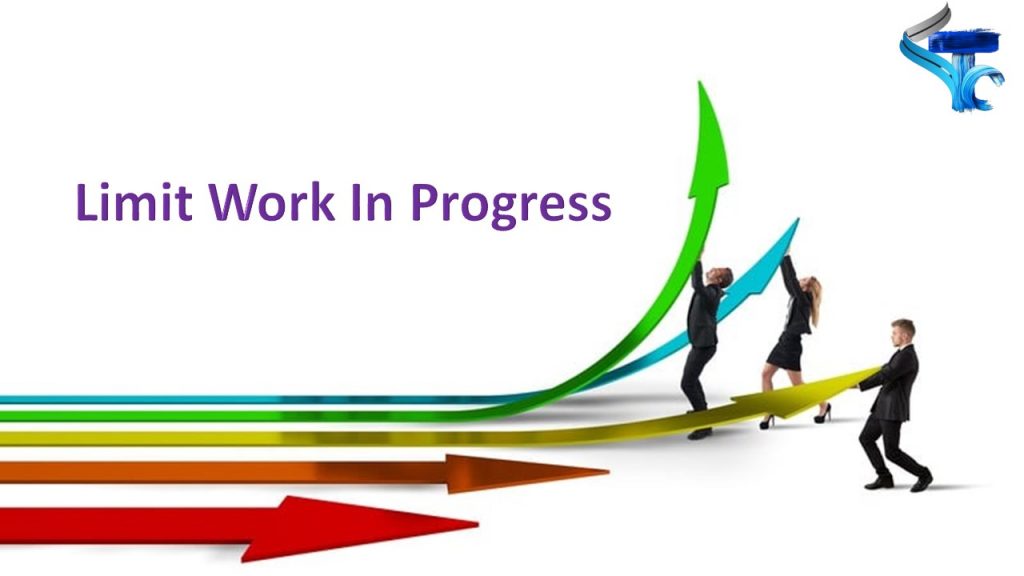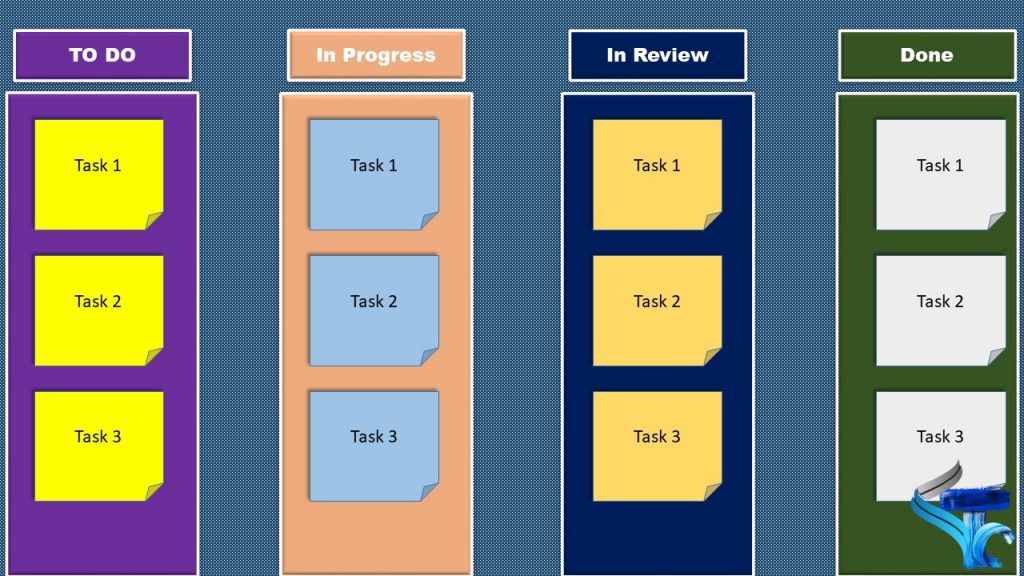Embark on a journey into the world of Kanban, where simplicity meets efficiency. This comprehensive guide explores Kanban, its system, and the transformative impact it has on project management. Uncover the essence of Kanban, Kanban flow, and gain valuable insights into its application in project management.
Kanban What is it?
Kanban, a Japanese term meaning “visual signal,” originated in manufacturing but has evolved into a versatile system applicable to various industries and a part of the Kaizen process. At its core, Kanban is about transparency, enabling teams to see their tasks, progress, and potential bottlenecks at a glance. By visualizing work, teams can make informed decisions, fostering a culture of continuous improvement.
At the heart of Kanban lies the concept of flow. Kanban flow is the dynamic movement of work items through a process. By managing work in progress and focusing on completing tasks before starting new ones, Kanban ensures a steady and efficient flow, minimizing delays and optimizing productivity.
History and Evolution of Kanban System
Kanban’s history begins in post-World War II Japan, specifically within the manufacturing processes of Toyota. In the 1940s, Taiichi Ohno, an industrial engineer, introduced the concept as a way to improve production efficiency. The term “Kanban” itself translates to “visual card” or “signboard” in Japanese, reflecting the system’s reliance on visual cues.

Lean Management
The principles of Kanban became intertwined with the broader philosophy of lean manufacturing. This approach aimed to eliminate waste, optimize processes, and ensure a just-in-time production model. Kanban’s visual signaling system played a pivotal role in achieving these objectives by providing a real-time view of inventory levels and production needs.
Software Development
During the late 20th century, Kanban expanded beyond manufacturing into the realm of software development. Agile methodologies embraced Kanban’s visual representation of work, emphasizing collaboration, adaptability, and continuous improvement. This marked the beginning of Kanban’s evolution into a versatile system applicable to various industries.
Global Acceptance
The 21st century witnessed Kanban’s global acceptance as organizations recognized its effectiveness in improving workflow visibility and efficiency. Beyond manufacturing and software development, Kanban found applications in areas such as marketing, healthcare, and even personal productivity. Its adaptability became a key factor in its widespread adoption.
In recent years, Kanban in project management has gained prominence. Teams leverage Kanban boards to visualize tasks, limit work in progress, and enhance collaboration. This approach provides a clear overview of project status, fostering transparency and facilitating the timely completion of tasks.
Understanding the Principles using Kanban Board
Think of this as a giant to-do list that everyone can see. Each task is like a sticky note on a board, showing what needs to be done. This visual magic helps everyone understand the work at a glance.
As tasks progress, they move across the board like puzzle pieces falling into place. From “To-Do” to “Doing” and finally to “Done,” each step is like completing a piece of a puzzle. It’s a satisfying way to see things come together.

It ensures there are no traffic jams; each task smoothly moves from one stage to another. It’s like watching a stream of tasks, and everyone can follow along without any bumps in the road.
It believes in doing one thing at a time, just like telling a story. Tasks flow from start to finish, creating a narrative where each task contributes to the bigger picture. It’s a simple and beautiful way to get things done.
Step to Create Kanban Flow/ Kanban Board
Whether you’re a beginner or a seasoned pro, discover the key actions to take for creating an efficient and organized Kanban system. These step-by-step instructions will guide you through the essentials, ensuring a seamless setup that enhances collaboration and boosts productivity.
Step 1: Define Your Workflow
Begin by understanding your work stages. What steps does a task go through from start to finish? Clearly define stages like “Backlog”, “To-Do,” “Doing,” and “Done” to map out the journey of your tasks. Understanding these stages is crucial for the subsequent steps in establishing your Kanban flow.
Step 2: Creating your Kanban Flow
Transition from conceptualizing to visualization by creating your Kanban board. This can take the form of a physical board with sticky notes or a digital version using tools like Trello, Infinity board or Asana. Allocate a section for each defined stage, offering a clear and visual representation of your tasks’ progression.
Step 3: Set Work in Progress Limits
Prevent task overload by introducing Work In Progress (WIP) limits for each stage on your design board. These limits ensure that your team concentrates on completing existing tasks before initiating new ones. This restriction promotes a steady workflow, minimizing bottlenecks and optimizing productivity.

The best way to limit the Work in Progress tasks is to set a number of tasks to be completed over a period of time or sprint. At the end of each sprint, you should have a sprint review meeting to discuss the challenges and optimize the huddles while progressing through the design board.
Step 4: Populate Your Board with Tasks
Bring your board to life by populating it with tasks. Each task becomes a card that moves through the various stages. Ensure task descriptions are clear and concise, allowing everyone, from team members to stakeholders, to comprehend the work involved.
Step 5: Collaborate and Communicate
Foster a collaborative atmosphere by encouraging open communication among team members. Utilize the visual cues on the design board to facilitate discussions about tasks, updates, and potential challenges. This step ensures that everyone is on the same page, promoting a shared understanding of project goals.
Step 6: Monitor and Manage
Implement a regular sprint review schedule for your design board. This proactive approach involves assessing the progress of tasks, identifying any roadblocks, and celebrating completed work. Monitoring and managing your board ensure that your Kanban flow stays aligned with your project objectives.
Step 7: Embrace Continuous Improvement
Cultivate a culture of continuous improvement within your team. Actively seek feedback, analyze the metrics, and be receptive to making adjustments. This iterative approach ensures that your Kanban flow evolves in tandem with your team’s changing needs, promoting sustained efficiency.
Designing your First Kanban Project Management Board
In this section, you will learn about the crucial components that transform your work processes, enhance collaboration, and streamline tasks for optimal efficiency. Establish the foundation of your Kanban board with core columns. Commonly, these include “To-Do,” “In Progress,” “In Review” and “Done.” Clearly delineate where tasks stand in the workflow, providing a visual roadmap for your team.

Download this presentation by clicking on the download button below:
Tailor your design board to reflect your unique workflow by adding custom columns. Whether it’s “In Review,” “Testing,” or specific project phases, custom columns allow flexibility in representing your distinct processes.
Creating Task Description
Craft task cards with clear and concise descriptions. Ensure that team members can grasp the essence of the task at a glance. Include essential details like assignees, due dates, and task dependencies for comprehensive understanding.
Color Codes and Labels
Enhance visual clarity with color-coded task cards and labels. Assign distinct colors to task categories or priority levels. Visual cues swiftly communicate crucial information, aiding in quick decision-making and task prioritization.
Categorizing with Swimlanes
Enhance organization by incorporating swimlanes. These horizontal divisions categorize tasks based on projects, priority, or teams. Swimlanes provide a holistic view of work distribution, aiding in resource allocation and project coordination.
Leverage swimlanes for visual hierarchy. Tasks in different swimlanes can be easily prioritized, allowing teams to focus on high-priority projects or critical tasks, ensuring alignment with overall project goals.
Optimize your design board layout for at-a-glance visibility. Ensure that team members can effortlessly comprehend the status of tasks and identify potential blockers. An organized layout fosters a shared understanding of the project’s big picture.
Optimizing Workflow with Kanban System
You will need to update the design board regularly to ensure that the visual projectile is always provides your stakeholders with the clear picture of the project. Here are a few pointers that you may need to consider:
- Collaborative Updates: Timely Communication – Encourage regular updates and collaborative discussions. Timely updates on task progress, challenges, and completions foster transparency, ensuring everyone is informed about the team’s collective efforts.
- Shared Responsibilities: Collective Ownership – Highlight shared responsibilities within the team. Every team member plays a vital role in maintaining the accuracy and integrity of the design board. Shared ownership instills accountability and a unified commitment to project success.
Metrics and Analytics
To effectively manage and improve your Kanban system, it’s crucial to measure performance and analyze key metrics. Understanding these metrics empowers you to make informed decisions, identify areas for improvement, and track the impact of changes to your workflow. Here are the steps that will help you track and analyze metrics.

Definition and Significance: Clearly define the starting point (initiation) and endpoint (completion) of each task. Consistent definitions ensure uniformity in cycle time measurement across different tasks and projects.
Utilize Kanban Board Timestamps: Leverage timestamps on your Kanban board to record task initiation and completion times. Incorporate these timestamps into your measurement process for accurate cycle time analysis.
Select Appropriate Measurement Tools: Choose measurement tools that align with your project’s needs. Whether utilizing project management software or dedicated analytics tools, selecting the right instruments is crucial for precise cycle time measurement.
Define Timeframe for Throughput: Establish a specific timeframe for measuring throughput, whether it’s daily, weekly, or customized based on project requirements. Consistency in timeframe selection ensures meaningful productivity comparisons.
Count Completed Tasks: Count the number of tasks completed within the defined timeframe. This straightforward method provides a quick overview of team productivity and sets the foundation for throughput analysis.
Leverage Advanced Analytics: Explore advanced analytics tools to delve deeper into throughput data. These tools can offer comprehensive insights, including task categories, team contributions, and areas for improvement.
Define Lead Time Components: Clearly define the components of lead time, encompassing task initiation, completion, and any intermediate stages. Understanding these components is vital for accurate lead time calculation.
Implement Continuous Monitoring: Establish a system for continuous lead time monitoring. Regularly analyze lead time data to identify trends, assess the impact of process changes, and refine your workflow for optimal efficiency.
Conclusion
In the expansive realm of Kanban, where simplicity seamlessly meets efficiency, the transformative impact on project management is undeniable. This journey through the essence of Kanban, its system, and the evolution it underwent, sheds light on its global acceptance and adaptability across diverse industries.

![The Power of Storytelling in Corporate Training: Igniting Success and Inspiring Growth [2023]](https://trainercentric.com/wp-content/uploads/2023/06/storytelling-1024x576.jpg)
